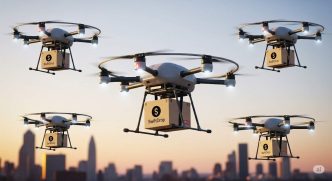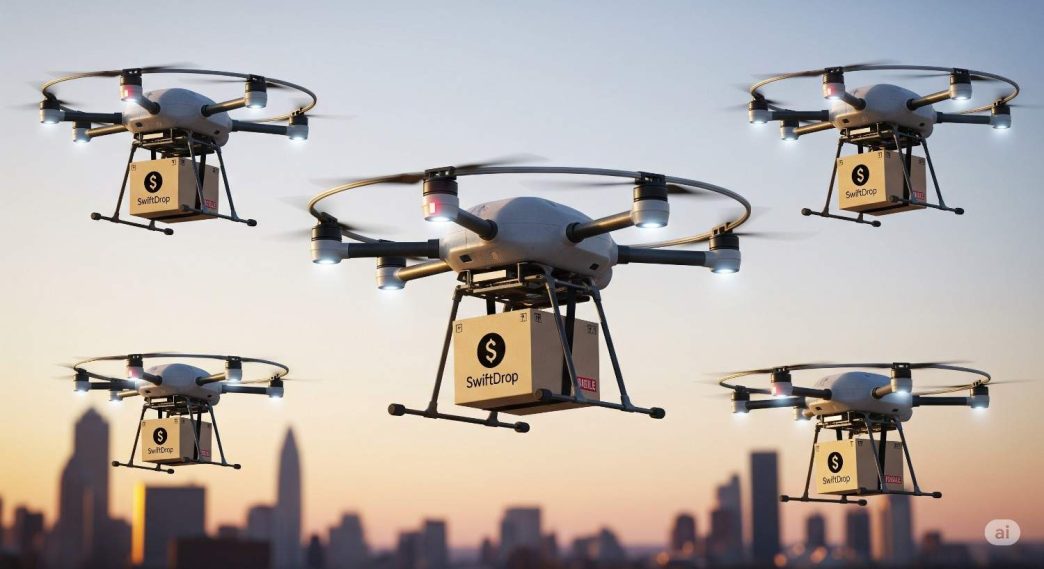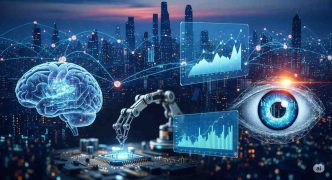Discover how AI-powered drones are transforming industries and public safety in 2025 — from disaster response to agriculture and smart cities.
Introduction
Drones are no longer just gadgets for photography or fun. In 2025, they have evolved into AI-powered drones flying machines that play a critical role in industries, public safety, and even everyday life. By combining artificial intelligence (AI) with unmanned aerial vehicles (UAVs), drones are becoming smarter, faster, and more reliable.
But how exactly are they being used in public safety and industry? Let’s explore.
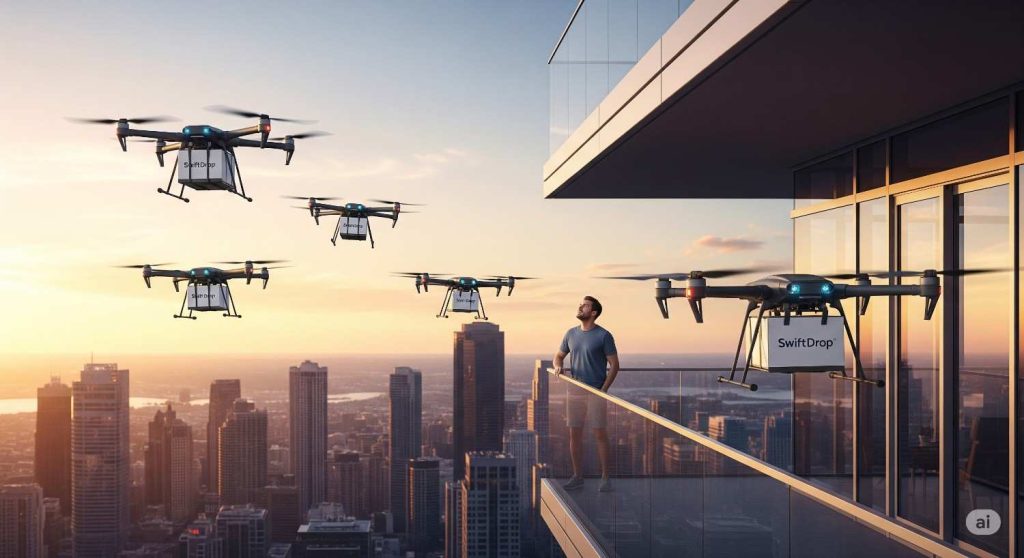
How AI-Powered Drones Work
AI-powered drones are equipped with:
- Computer Vision: To recognize objects, people, or hazards.
- Machine Learning: To analyze data and make decisions in real-time.
- Autonomous Navigation: Avoid obstacles and follow paths without human control.
- Edge Computing: Process data directly on the drone, reducing latency.
This makes them highly effective for mission-critical tasks where speed and accuracy matter.
AI Drones in Public Safety
1. Disaster Response & Rescue
- Used to survey earthquake, flood, or fire-hit areas.
- AI maps danger zones quickly, guiding rescuers.
2. Law Enforcement
- Helps monitor large crowds, protests, or traffic without deploying extra police force.
- AI facial recognition (where legally permitted) improves surveillance.
3. Firefighting Support
- Drones detect hotspots via thermal cameras.
- Guide firefighters to the source of fire more safely.
4. Search and Rescue Operations
- Equipped with night vision + AI tracking to find missing persons in forests or mountains.
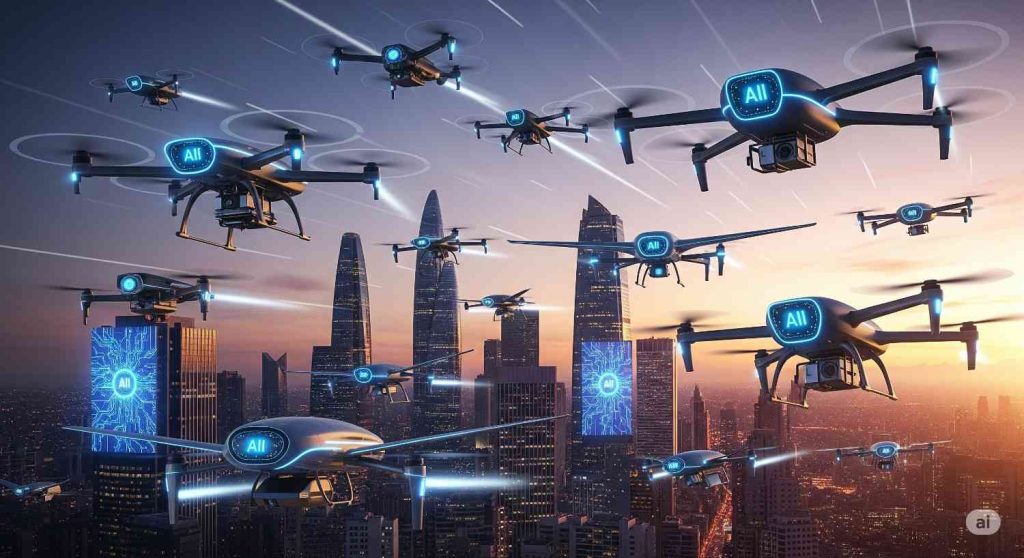
AI-powered drones in Industry
1. Agriculture
- AI drones analyze crop health with multispectral imaging.
- Automated spraying reduces pesticide waste and increases yields.
2. Construction & Infrastructure
- Site monitoring with 3D mapping.
- AI detects cracks, weaknesses, or progress delays.
3. Mining & Oil
- Inspections in dangerous areas without risking human lives.
- Gas leak or structural collapse prediction with AI sensors.
4. Logistics & Delivery
- Autonomous drones delivering goods to remote areas.
- Companies like Amazon and Zipline already experimenting with AI-driven delivery fleets.
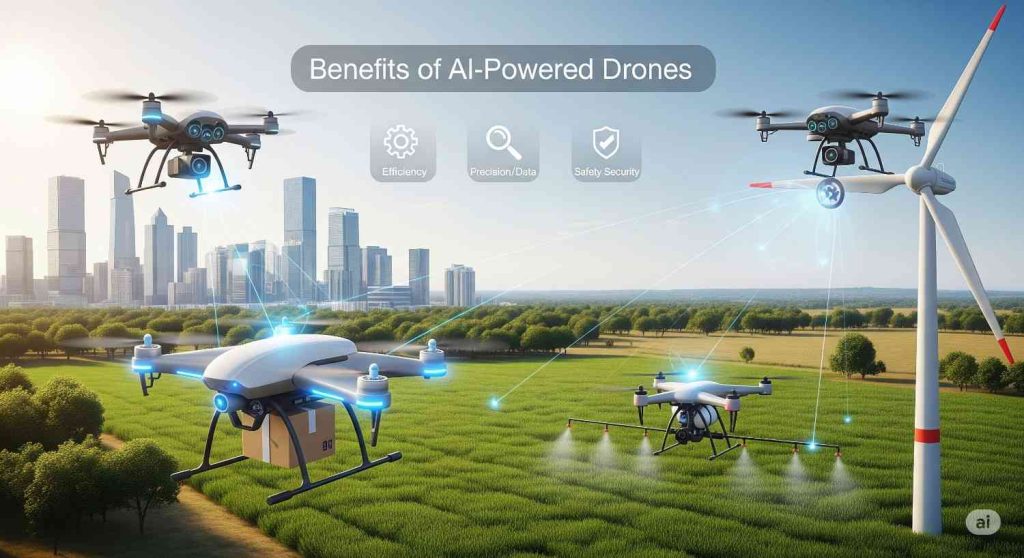
Benefits of AI-Powered Drones
- Faster Decision Making: AI processes data instantly.
- Safety First: Reduces human risk in dangerous zones.
- Cost-Effective: Long-term savings by reducing manpower.
- Scalability: Can be deployed in fleets for large operations.
Challenges & Concerns
- Privacy Issues: AI surveillance raises ethical debates.
- High Costs: Advanced AI drones remain expensive.
- Regulations: Airspace laws restrict wide-scale deployment.
- Cybersecurity Risks: Vulnerable to hacking if not secured.
Future of AI-Powered Drones (2025 & Beyond)
- Smart Cities: AI drones monitoring traffic, pollution, and security.
- Healthcare: Blood and medicine delivery to rural areas.
- Defense: Border patrols and autonomous defense systems.
- Environmental Protection: Tracking deforestation, wildlife, and climate monitoring.
By 2030, experts predict that AI drones will be as common as CCTV cameras, playing a vital role in safety and productivity.
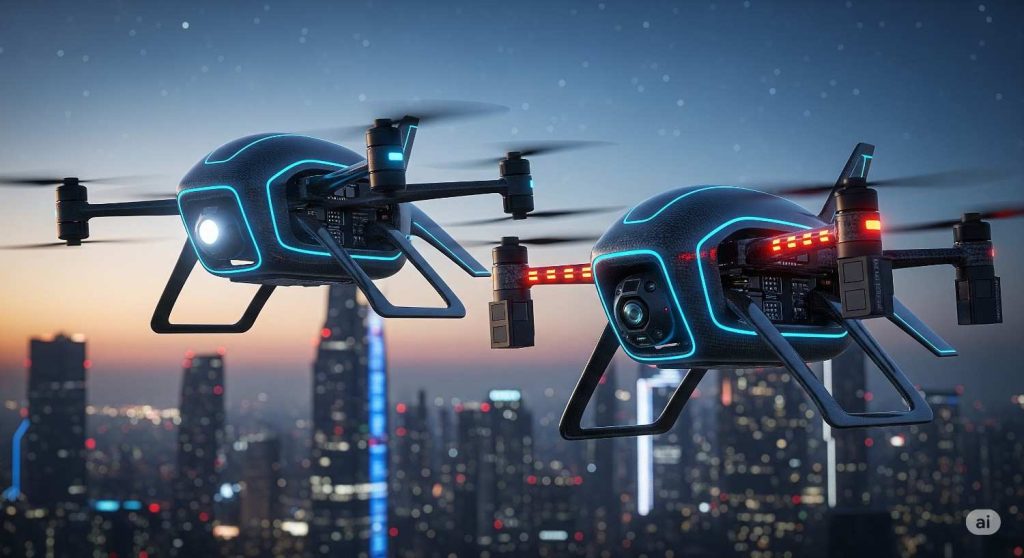
FAQs
1. What are AI-powered drones used for?
They are used in public safety, agriculture, construction, mining, logistics, and surveillance.
2. How do AI drones help in disaster response?
They map danger zones, detect survivors, and guide rescue teams in real-time.
3. Are AI drones safe to use?
Yes, but regulations and cybersecurity must be in place to ensure safety.
4. Can AI drones deliver goods?
Yes, companies are testing autonomous delivery drones for medical and commercial use.
5. What is the future of AI-powered drones?
By 2030, they may be widely used in smart cities, defense, and environmental monitoring.
Conclusion
AI-powered drones are more than futuristic machines — they are already reshaping industries and public safety in 2025. From saving lives in disasters to boosting agriculture and logistics, their potential is limitless.
However, to fully unlock this potential, governments, industries, and tech leaders must address privacy, regulation, and safety challenges. The future of AI-powered drones isn’t just flying high — it’s flying smart.
Know more related:
The Rise of 6G Research: Explore
